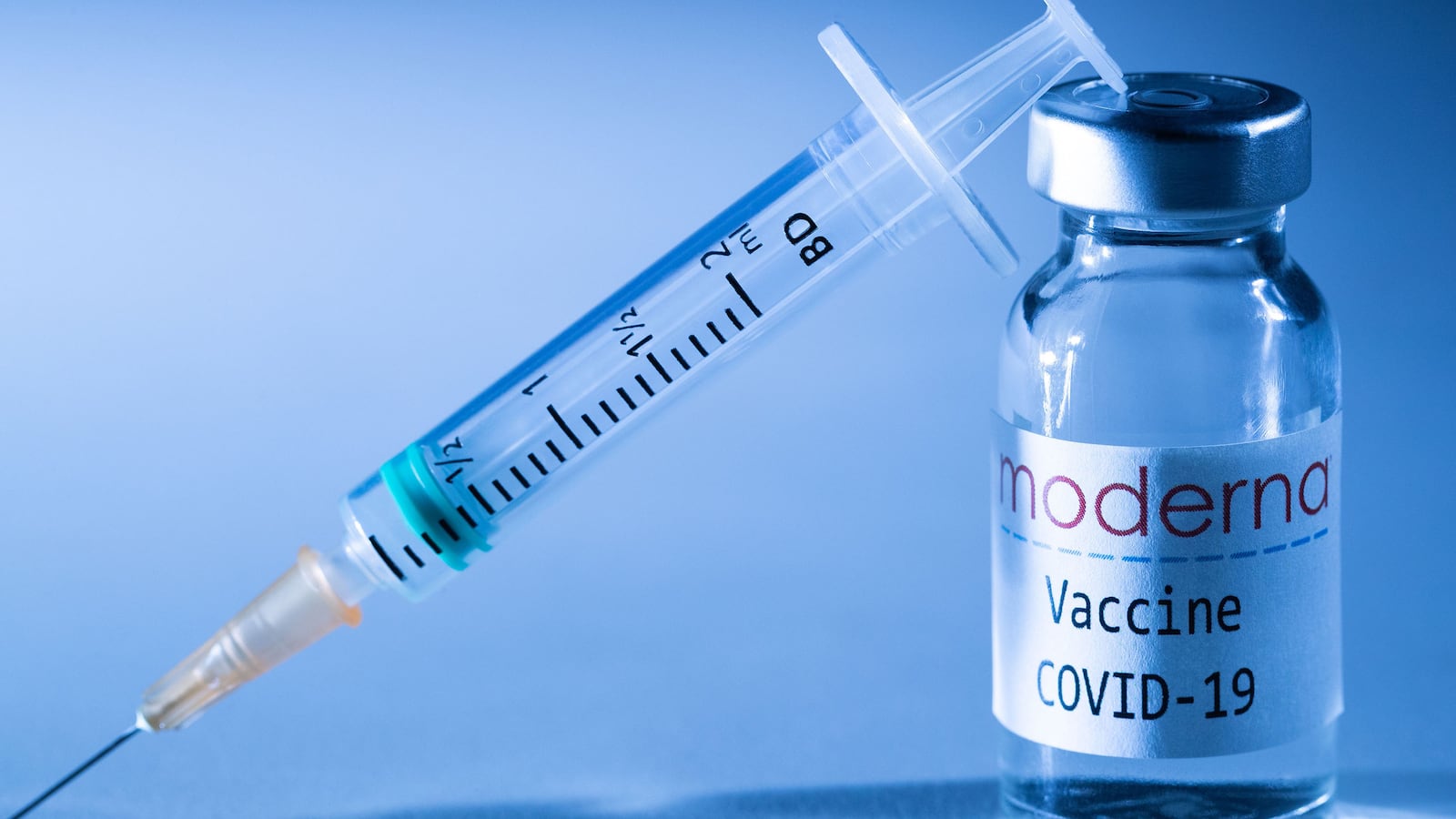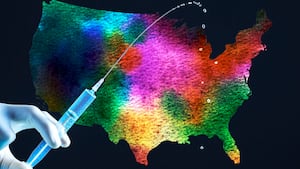On Monday, Massachusetts-based biotech company Moderna announced its coronavirus vaccine has been 95 percent effective in phase-three trials, just a week after rival pharmaceutical giant Pfizer announced that its own candidate was at least 90 percent effective.
The early trial results suggest at least two vaccines employing unprecedented technology are potentially just weeks away from getting initial approval—and stemming the tide of a pandemic infecting well over 100,000 Americans a day. But if the growing number of seemingly viable vaccines points to a way out of the pandemic, experts warned, hundreds of thousands more Americans could die first.
Welcome to Rabbit Hole, where we dive deep into the biggest story. It’s for Beast Inside members only. Join today.
“It’s too early to pop the champagne,” Lawrence Gostin, a Georgetown University global-health expert, told The Daily Beast.
With emergency-use authorization from the U.S. Food and Drug Administration (FDA), Pfizer and Moderna could begin shipping doses before the end of the year, initiating a potentially years-long campaign to vaccinate hundreds of millions of Americans.
But among the experts The Daily Beast spoke with, that hope was tinged with a grim awareness of the difficult months ahead. Record numbers of Americans are catching the coronavirus as cooler winter air makes transmission easier, people grow even wearier of social-distancing, and families prepare to gather for the holidays.
The financial class, as it did after Pfizer’s announcement, wasted little time before celebrating Monday, with Moderna stocks jumping after the company revealed initial results. “The trial has met the statistical criteria pre-specified in the study protocol for efficacy, with a vaccine efficacy of 94.5 percent,” the company stated.
The company’s interim analysis is based on the first 95 COVID infections among the roughly 30,000 people Moderna has enrolled in its phase-three trials. Ninety of the cases were from the placebo group, and just five were in the group that got two doses of Moderna’s messenger-RNA (MRNA) vaccine, which works by introducing a genetically-engineered nanoparticle that encourages the production of coronavirus-fighting antibodies into the immune system.
The 95 COVID cases included 15 people 65 or older, and 20 people from minority groups, Moderna stated.
Pfizer’s candidate is also an MRNA vaccine, and it’s worth noting that the technology has never successfully been rolled out to the public in a mass vaccination campaign.
Paul Offit, director of the Vaccine Education Center at the Children’s Hospital of Philadelphia, cautioned against drawing definitive conclusions from these initial claims. “These are press releases,” Offit told The Daily Beast. “We need to see the data.”
Even so, the early findings are encouraging. Both Pfizer and Moderna’s vaccines appear to be more effective than most flu vaccines—which range from 40-percent to 60-percent effectiveness—and as effective as the measles vaccine, one of the gold standards in the field of public health.
If that efficacy holds, you could create population-level immunity by vaccinating around 70 percent of the population, Gostin estimated.
But getting to 70 percent will take a huge, coordinated effort by authorities and health workers. Both Moderna and Pfizer’s vaccines require two doses.
“That makes tracking who’s got the vaccine and who needs a second dose more complicated,” Irwin Redlener, the founding director of Columbia University’s National Center for Disaster Preparedness, told The Daily Beast. “It’s going to stress our data systems and local health systems, which were already starved of funding.”
Both vaccines have to be kept cold to retain their potency, though Moderna’s candidate appeared to have a leg up on that score.
The Pfizer vaccine breaks down within hours at room temperature and thus requires careful handling and deep-freezing during storage and shipping. Clinics and hospitals across the United States have been racing to install freezers, but many smaller clinics can’t afford the equipment. To help with distribution, Pfizer plans to ship doses of its vaccine in special containers packed with dry ice.
“We’re going to have problems on the cold-chain side of things—with Pfizer, especially,” Redlener said.
Moderna’s vaccine, by contrast, requires less intensive cooling, and can even be stored in a standard refrigerator for as long as a month, according to the company. The U.S. Centers for Disease Control and Prevention (CDC), which is in charge of drawing up vaccine-distribution plans, could direct Moderna’s vaccine to rural clinics lacking freezers and Pfizer’s vaccine to big-city hospitals with more sophisticated equipment.
The feds expect to vaccinate health-care workers first, followed by the most vulnerable Americans, including prisoners and nursing-home residents. Millions of doses are already in production thanks in part to big advance orders from the federal government. Even so, it could take months to vaccinate these priority groups. (The CDC referred questions to the U.S. Department of Health and Human Services, which did not immediately respond to emails seeking comment.)
It’s only after that initial immunization effort that the vaccines would be available to everyday Americans. Anthony Fauci, the longtime director of the U.S. National Institute of Allergy and Infectious Diseases, has said Pfizer’s vaccine could be available to all Americans by April, and he called the Moderna trial results “extremely good news.”
Gostin was less optimistic, suggesting the general public may not start getting vaccinated until this summer. “We’re not going to be seeing clear effects of a vaccine campaign until late 2021,” he told The Daily Beast.
As more and more people get vaccinated, infections, hospitalizations, and deaths should begin to ebb. Given the precarious state of health systems across the country and several hundred new deaths—at least—per day, a month or two could make a world of difference.
“As we roll out first-in-line vaccination at the end of this year, then through the first six months of next year, we can expect better control of the epidemic,” Jeffrey Klausner, a professor of medicine and public health at UCLA who previously worked at the CDC, told The Daily Beast.
But that doesn’t mean authorities should relax public-health measures, Klausner stressed. Social-distancing and masks will continue being the main tools for preventing mass-infection. “Testing and supportive quarantine and isolation will still be critical for those exposed and infected,” he added.
Dosing three-quarters of the population—if they are willing to take it in spite of anti-vaxxer sentiment—with some combination of Pfizer and Moderna’s vaccines could end the current phase of the pandemic in the next year or so. And that’s not even taking into account additional vaccines that could wrap up their trials in the coming months and also get FDA approval.
But there’s a catch. “The only thing we do not know for sure right now is how long the vaccine protection lasts,” Lola Eniola-Adefeso, a University of Michigan bio-engineer, told The Daily Beast.
If immunity doesn’t last, we might have to repeat the whole process of vaccinating hundreds of millions of Americans in 2022—and every year after that for the foreseeable future.


